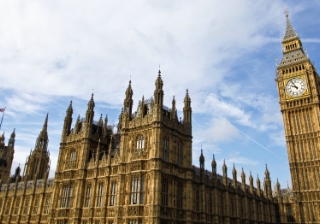Relaxed mortgage affordability to spark 24.5% rise in house prices by 2029: Savills
Medium-term potential for growth has been upgraded due to a more relaxed approach to mortgage affordability tests.

Savills has launched a revised five-year mainstream house price forecast in light of a more cautious start of the year.
While the overall five-year outlook remains intact, the distribution of growth has shifted due to more delicately balanced market conditions.
Savills has revised its UK forecast for 2025 down to 1.0% (from 4%), while medium-term prospects have been upgraded due to a more relaxed approach to mortgage affordability tests, which should support both house prices and the number of transactions.
Overall, Savills expects house price growth to total 24.5% by the end of the five years to 2029, adding an extra £86,300 onto the average house price.
Key drivers behind short term revisions
Market activity in 2025 has been complicated by how buyers reacted to stamp duty changes. A surge in activity at the start of the year culminated in March seeing the second-highest monthly sales volume since 2006, as buyers rushed to beat the deadline.
However, this momentum was followed by a sharp rebalancing, as new buyer enquiries plummeted to their lowest level since September 2023, according to RICS. While a dip was anticipated, the scale of the decline outpaced the earlier surge. But encouragingly, demand turned positive in June after four consecutive months of decline.
Meanwhile, supply has remained consistently positive in 2025, hitting +7 in May, but sales agreed are still low (-28). This imbalance led to a 0.5% dip in Q2, reflecting a high level of unsold homes on the market.
Total transactions are projected to reach 1.04 million by year-end, in line with previous forecasts. While elevated supply levels may temper price growth, Savills maintains a positive outlook for 2025 overall despite the slow start.
Beyond next year, house price growth will be determined by affordability, says Savills.
Emily Williams, director of research at Savills, said: “We anticipate that buyer demand will pick up heading into early autumn, particularly among first-time buyers and mortgaged home movers, driven by an expected base rate cut in August and a more competitive mortgage market. Consumer confidence in June was the joint highest since last summer, and mortgage rates remain at their lowest for a while.”
Lucian Cook, head of residential research at Savills, commented: “Interest rates have fallen as expected, giving buyers a bit more financial capacity than they had a year ago. But a lot has changed over the last six months. Greater geopolitical uncertainty – including tariffs and trade wars – has made predicting the precise path of further cuts more challenging.
“The last three months have been marked by a lack of buyer activity, despite improving affordability, and annual house price growth slowed to 2.1% in the year to June, according to Nationwide (down from 4.7% in December 2024). In light of this and the potential for more buyer uncertainty in the run up to the Autumn Budget, we have revised our house price forecast for this year.
"Recent easing of mortgage regulations, including more flexibility on affordability stress tests and higher allowances for loans above 4.5 times income, is likely to boost transaction volumes, particularly by helping more first-time buyers get on the ladder. As a result, we expect that by 2027, transaction numbers will approach the post-GFC norm of 1.2 million per year.
Dan Hill, research analyst at Savills, added: “Falling interest rates in combination with relaxation around affordability tests will open up greater capacity for house price growth than would otherwise be the case, ultimately leading to a higher transaction market.
“We expect this to offset the weaker economic outlook over the forecast period, albeit the softened prospects for economic growth will temper homebuyers appetite to stretch themselves much further.
However, recent experience tells us that the path of interest rates is often winding and uneven, and we should therefore still treat the outlook with caution.
“Higher than expected inflation in the UK is making policymakers cautious when it comes to further base rate cuts. While we have forecast based on the scenario described, there are ongoing risks in both directions which have the potential to disrupt the housing market."

Breaking news
Direct to your inbox:
More
stories
you'll love:
This week's biggest stories:
Budget
Budget: Government introduces mansion tax on high-value homes

Budget
Budget: Government introduces £2,000 salary sacrifice cap

Lifetime Isa
Budget: Lifetime ISA to be scrapped in favour of new first-time buyer ISA

Budget
Budget: Property income tax to rise by 2%

FCA
Firms required to report complaints involving vulnerable customers under simplified FCA rules

Santander
Santander joins mortgage price war with new rates from 3.51%
